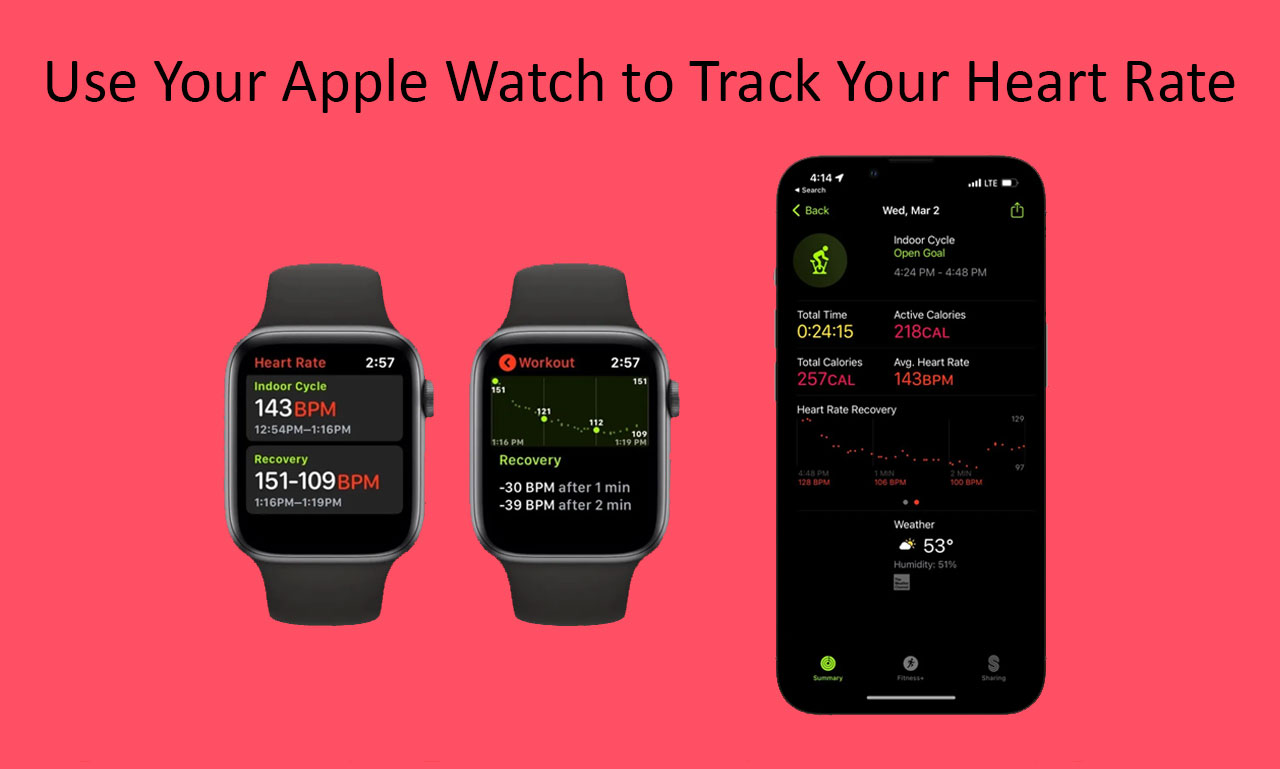
Our ability to track and monitor our health has been completely transformed by the Apple Watch, particularly in regard to heart rate. With its sophisticated sensors and algorithms, the Apple Watch can continuously measure heart rate, which makes it an invaluable tool for tracking daily health as well as more profound health discoveries. This is a thorough guide on using the Apple Watch to track your heart rate.
Understanding Heart Rate Monitoring
Measuring the number of heartbeats per minute (BPM) is known as heart rate monitoring. It’s a vital sign of cardiovascular health that also offers information on stress, general well-being, and exercise levels. Photoplethysmography (PPG) technology, which the Apple Watch employs, measures the quantity of light absorbed by beaming green LED lights on the skin in order to detect blood flow through it.
Setting Up Heart Rate Monitoring
Initial Setup:
- Make sure your iPhone and Apple Watch are linked.
- On your iPhone, launch the Apple Watch app.
- Enable “Heart Rate” by going to “My Watch” > “Privacy” > “Health.”
Wearing Your Watch:
- Put your Apple Watch on your wrist snugly. Accurate readings are ensured with a suitable fit.
Monitoring Your Heart Rate
Using the Heart Rate App:
- On your Apple Watch, open the Heart Rate app.
- Your walking average, resting heart rate, and current heart rate will all be shown by the app.
Background Monitoring:
- Your heart rate is monitored by the Apple Watch when you are moving or exercising throughout the day. You may view this information in the Health app on your iPhone.
Heart Rate Notifications:
- Configure alerts for high and low heart rates. Go to your iPhone’s Apple Watch app, choose “Heart,” and set your heart rate thresholds.
Analyzing Heart Rate Data
Health App Insights:
- Launch the iPhone Health app.
- To see comprehensive heart rate information, such as resting rate, walking average, and heart rate variability, navigate to “Heart.”
Trends and Patterns:
- Track patterns over time to spot any changes or advancements in your cardiovascular well-being.
- Give your healthcare physician access to this information to get their expert opinion.
Advanced Heart Monitoring Features
ECG App:
- An ECG app available on Apple Watch Series 4 and later models can produce an electrocardiogram that resembles a single-lead ECG.
- Open the ECG app, then follow the instructions on the screen to get started.
Irregular Rhythm Notifications:
- If the Apple Watch notices a strange rhythm that might be indicative of atrial fibrillation (AFib), it will alert you.
Benefits of Heart Rate Monitoring
- Fitness Tracking: Make the most of your workouts by understanding your current level of cardiovascular fitness.
- Health Awareness: Recognise any cardiac problems at an early stage.
- Handle stress by monitoring the impact of stress on your heart rate.
- Personalized Insights: Receive advice and insights specific to your health.
Conclusion
With its stylish design and cutting-edge technology, the Apple Watch is a convenient wrist-based heart rate monitoring gadget. Whether you’re a health-conscious individual, an athlete, or someone with a medical condition, the Apple Watch offers priceless insights into your cardiac health. Understanding your heart rate patterns and keeping an eye on them on a regular basis can help you maintain your health and identify possible problems early.
FAQs
How precise is the heart rate measurement on the Apple Watch?
For the majority of users, the Apple Watch is very accurate; nevertheless, accuracy can change depending on things like fit, movement, and skin perfusion.
Can the Apple Watch detect cardiac problems?
Although the Apple Watch contains features like an ECG for more in-depth heart monitoring and can assist in detecting irregular heart rhythms, it shouldn’t take the place of expert medical guidance.
How frequently does the Apple Watch measure heart rate?
When you’re not moving, the Apple Watch takes your heart rate every ten minutes; when you’re working out or engaging in intense exercise, it takes more frequent readings.

Leave a Reply